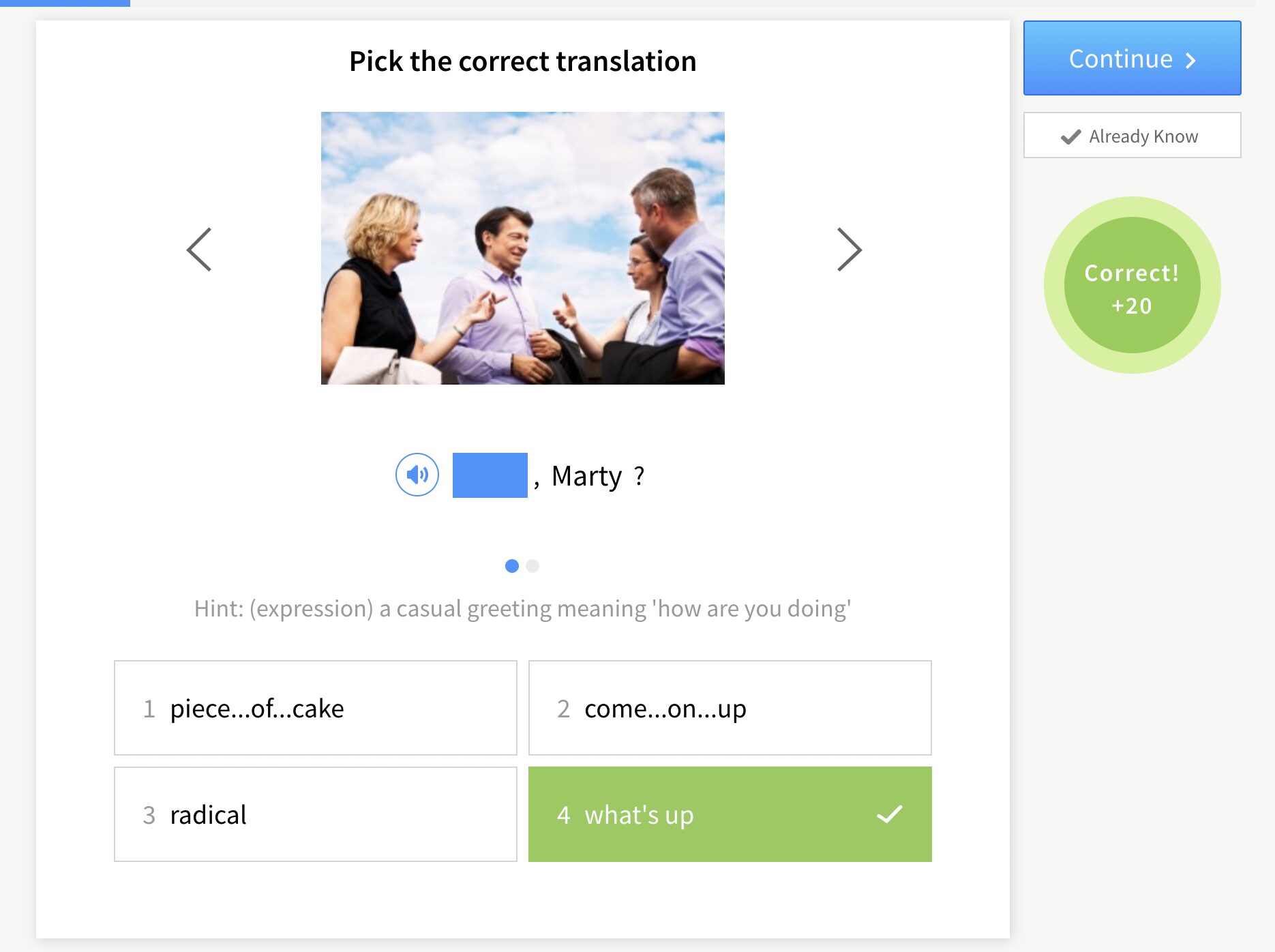5 Great ESL Number Games

Learning numbers in a foreign language is straight-up memorization.
Think about it: You can explain verb form rules and conjugations to your ESL students. But there’s no real logic linking the word “four” to the number “4.”
Check out five awesome ESL number games below that will help students stop thinking so hard and let their subconscious brains do the work.
Download: This blog post is available as a convenient and portable PDF that you can take anywhere. Click here to get a copy. (Download)
Fizz Buzz
Originally, this game was used to teach native English speakers about the math concepts of division and factors.
However, it works just as well with older ESL students who’ve already acquired this knowledge in their native tongue! If your learners have finished the fourth grade, this is a great game to play with them—though you can vary it for younger students as well.
Instructions
- Decide a number to represent “fizz” and a number to represent “buzz.” (Two, three or five are good choices to start with.)
- Have students stand in a line at the front of the classroom.
- Going down the line, each student says a number in the sequence. If they end up with the “fizz” or “buzz” numbers, they need to say the correct word instead of the number when it’s their turn.
- The trick is that they also need to say “fizz” or “buzz” for any number divisible by the original “fizz” and “buzz” numbers!
- Anyone who says the wrong number or forgets to say “fizz” or “buzz” is out and returns to their seat.
- The last one standing wins!
For example, say you’ve decided to use “fizz” for three and “buzz” for five. The game would sound like this: One, two, fizz, four, buzz, fizz, seven, eight, fizz, buzz… And so on!
Variations
- Write out the sequence of numbers on the board or provide a hand-out for students to follow along with if it’s too challenging for them to recall the sequence by memory alone.
- For younger students, ditch the factors. Students will simply need to recognize if the number in question appears at all. If “fizz” is three and “buzz” is five, a higher sequence would then sound like: 10, 11, 12, fizz, 14, buzz, 16…
- For an even simpler game, stop at 10 and start the rotation over again. This will reinforce numbers 1-10. You can expand the length of the numerical rotation to 20, 30 and so on as your students progress.
21
Similar to Fizz Buzz, this ESL number game takes a bit longer to complete, so it’s not necessarily ideal for warm-ups.
This is best done at the end of your main numbers module and if you have another set of vocabulary you’re working on with the students. To practice a specific vocab set, you may want to provide students with a list of the words to view as they play.
Instructions
- Have the class form a circle.
- One by one, students count off in order from one to 21.
- The student who said “21” can now change one number in the sequence to a word. If you’re practicing animal vocabulary, for instance, they might choose to change the number three to “cow.”
- Starting with the next student, they’ll count again from one to 21—but the student who should say “three” says “cow” instead.
- Once more, the student who says 21 gets to replace another number with another vocabulary word. So the sequence might end up something like: One, monkey, cow, four, five, pig…
- When someone trips up or forgets, they’re out and will take a seat. Again, the last one standing wins!
Bingo
Bingo is a classic classroom game. It’s often used to keep young children quiet and focused, but it can be entertaining for older students and adults as well!
This is most fun if you have tokens or something like buttons for students to cover their squares with so that you can play multiple times.
Instructions
- You’ll want to either prepare Bingo cards (like with a free generator) or simply print out blank Bingo sheets for the students to create their own cards using a specified list of words, which they’ll do before the game begins.
- It’s particularly fun to designate a student (or several) to be the number caller, so decide that next.
- The number caller(s) will call out a number from the list. If a player’s card contains that number, they’ll cover that square on their board.
- Repeat the previous step until a player has a line of covered squares. They’ll call out “Bingo!” and then read off their numbers to make sure they were called.
- Consider giving little treats or stickers to students who successfully get Bingo to make the game more exciting!
Try to keep Bingo moving quickly so that there’s a clear winner, and so that students don’t spend too much time thinking about what’s being said. The goal is for the association between the word and the number to become automatic.
Variations
- The Bingo cards can either have the words written out (“three”), the digits (“3”) or a combination of both.
- For more advanced students, you can use simple arithmetic problems instead of individual numbers to up the complexity and amount of concentration required.
For example, a caller might say, “Three plus four.” Players do the math and cover “seven” on their grid. This can also be done the opposite way—a caller reads out “seven,” and players look for simple arithmetic problems that equate to the called number.
Go Fish
Everyone remembers Go Fish from their elementary school days. It’s a classic card game that can definitely help students (particularly beginners) remember numbers. Not to mention, the phrase “Go fish!” is fun to call out during the game, and it’ll keep students excited!
Instructions
- Practice correct sentence forms and encourage the use of full questions and answers during play. For example, one student asks, “Do you have any… threes?” and the other replies, “No, I don’t have any threes. Go fish!”
- Split students into groups—each group can have two to six people. Two players will be the easiest, and six will be the most challenging.
- Each group needs a full deck of cards. For groups of two or three, each player will receive seven cards to start the game. In groups of four or more, each player receives five cards.
- Once players have their cards, the rest of the deck is spread out face-down in the middle, forming the “fishing pond.”
- Players take turns asking each other if they have a specific card, as in the example in the first step. Remind students they can only ask about cards they already have in their hands.
- Once a player has four of a kind (all four Kings, for instance), they lay them on the table for everyone to see.
- The first player to run out of cards in their hand is the winner!
Be sure to go over the rules of this game before you begin, as different cultures—and even different individuals!—have slightly different ways of playing. Here’s a reference for more complete rules if you need one.
Memory
This matching game is a good one to have on hand for all sorts of vocab tests. You can even make your own Memory cards and laminate them so you’ll have them for years to come.
Instructions
- Prepare your Memory cards. It’s imperative to include both the number and word so students learn to associate between them.
- The cards are spread out in front of a student (or students) in a neat, grid-like pattern.
- The player will flip over one card and read the number aloud. Then they flip over another card, hoping to uncover the matching number. So if the first card is a “six,” they’ll be hoping to flip over the other “six” with the second card.
- If they found a matching set, the cards remain face up and the student begins again (or the next student comes up for a turn).
- If the student did not find a matching set of numbers, the cards are turned face down again and the next turn begins. Players must then try to remember which cards they’ve already seen and where—hence the name “Memory.”
- Play continues until all matches have been found and all cards are face up.
Of course, this list is just a jumping-off point!
You can come up with all sorts of number games that work with any level of students and any ESL teaching strategies. You can play them as a whole class or have “number game stations” for greater variety.
The best way to use games in an ESL classroom setting, however, is to use them repeatedly. Pick one as your go-to warm-up game. Then, try to commit five to 10 minutes to this game every day, or nearly every day, to really help things stick in your students’ heads.
When students start to get used to one game, then you can switch it up—it’ll keep the fun in learning!
Download: This blog post is available as a convenient and portable PDF that you can take anywhere. Click here to get a copy. (Download)
And One More Thing…
If you’re like me and prefer learning English on your own time, from the comfort of your smart device, I’ve got something you’ll love.
With FluentU’s Chrome Extension, you can turn any YouTube or Netflix video with subtitles into an interactive language lesson. That means you can learn from real-world content, just as native English speakers actually speak.
You can even import your favorite YouTube videos into your FluentU account. If you’re not sure where to start, check out our curated library of videos that are handpicked for beginners and intermediate learners, as you can see here:
FluentU brings native English videos within reach. With interactive captions, you can hover over any word to see an image, definition, and pronunciation.
Just click on the word to see other example sentences and videos where the word is used in different contexts. Plus, you can add it to your flashcards! For example, if I tap on the word "viral," this is what pops up:
Want to make sure you really remember what you've learned? We’ve got you covered. Practice and reinforce the vocab from each video with learn mode. Swipe to see more examples of the word you’re learning, and play mini-games with our dynamic flashcards.
The best part? FluentU tracks everything you’re learning and uses that to create a personalized experience just for you. You’ll get extra practice with tricky words and even be reminded when it’s time to review—so nothing slips through the cracks.
Start using the FluentU website on your computer or tablet or, better yet, download our from the App Store or Google Play.
Click here to take advantage of our current sale! (Expires at the end of this month.)












